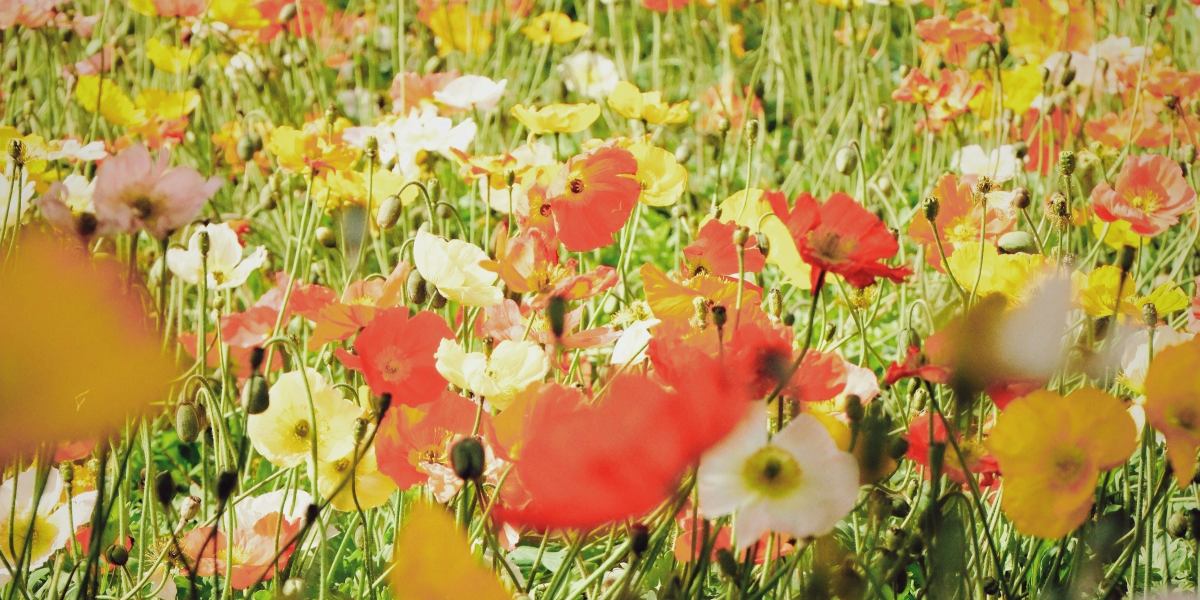Think about the last time you bought a bouquet of flowers. There’s a good chance those gorgeous blooms weren’t grown locally. The cut flower industry is a massive global business, with complex supply chains, ethical challenges, and a surprising environmental impact. Let’s journey with your bouquet from its origin to understand the scale and complexities of this industry.
Where Your Flowers Come From
Forget windmills and tulips—the Netherlands is a surprisingly dominant force in the world of cut flowers! While they do grow an abundance of flowers, their real superpower lies in technology and logistics. Massive, high-tech greenhouses optimize growing conditions year-round, producing a mind-boggling variety of blooms. Additionally, the Netherlands has developed highly efficient auction systems where flowers from all over the world are bought and sold at lightning speed, ensuring they reach consumers while still fresh.
Picture lush, sun-drenched fields cascading down mountainsides, filled with vibrant roses and carnations – that’s Colombia and Ecuador. These South American countries have near-perfect flower-growing conditions. High altitudes provide cool nights, encouraging larger blooms, while plentiful sunshine ensures those vibrant colors we love. These nations have become synonymous with providing classic, affordable flowers for the global market.
In recent decades, East Africa, particularly Kenya and Ethiopia, has risen to prominence as a major player in the cut flower industry. The climate here is also well-suited to growing roses, with warm sunny days and cool nights. Roses destined for the European market have a significantly reduced carbon footprint when sourced from East Africa compared to those shipped from South America. However, concerns regarding labor conditions and water use are crucial considerations for consumers seeking ethically sourced blooms.
“The global flower trade is surprisingly complex. A bouquet on your table could contain roses from Colombia, carnations from Kenya, and tulips flown in from the Netherlands – a truly international collaboration of nature and human ingenuity,” observes a floral industry researcher.
Getting your flowers from field to vase involves a meticulously orchestrated logistical feat. Harvested flowers are prepped and graded at lightning speed to maintain freshness. They’re then rushed to airports, flown in climate-controlled planes (often halfway across the world), and distributed to auction houses, wholesalers, and eventually, your local florist. The entire process usually takes only a few days!
The Environmental Toll
Picture those picture-perfect, blemish-free blooms…they often come at a cost. Many large-scale flower farms rely heavily on pesticides and herbicides to combat pests and weeds. Unfortunately, these chemicals don’t stay put. They can seep into the soil, contaminating groundwater, and get carried by runoff into rivers and streams, harming aquatic life and the surrounding ecosystem.
Now imagine vast greenhouses or expansive fields of flowers blooming in a desert landscape. Flowers are thirsty plants, and keeping those blooms lush and vibrant in arid regions requires massive amounts of irrigation. This puts a strain on already scarce water resources, potentially competing with the needs of local communities and agriculture essential for food production.
Ever wonder how those roses arrive from Kenya looking flawless days later? The unfortunate reality is much of the international flower trade relies on air transport. Planes may be fast, but they’re also notorious for having a large carbon footprint. Shipping flowers halfway across the globe contributes significantly to greenhouse gas emissions that drive climate change.
“The beauty of flowers can mask a less appealing reality. The quest for year-round, unblemished blooms often comes at a steep environmental price,” notes an environmental researcher specializing in sustainable agriculture.
Labor conditions in the cut flower industry can be a concern. Workers, particularly in developing nations, may face long hours, low pay, and exposure to harmful chemicals. The Fair Trade movement aims to address these issues by certifying flowers produced under ethical labor standards and ensuring farmers receive a fair price for their blooms.
Growing awareness of the environmental and ethical issues within the cut flower industry has led to a surge of interest in locally grown flowers. The “Slow Flowers” movement, similar to the farm-to-table trend, emphasizes seasonal blooms grown with sustainable practices. It gives consumers the opportunity to support local farmers and reduce their floral carbon footprint.
Choosing Consciously
How can you be a more mindful flower consumer? Here’s what to consider:
-
Seek out local blooms: Farmers’ markets, small-scale flower farms, or florists who source locally are the best ways to support sustainable growing practices.
-
Inquire about sourcing: Ask your florist where their flowers come from and if they have options grown with ethical and environmentally friendly methods.
-
Look for certifications: Labels like “Fair Trade Certified” or “Veriflora” indicate flowers meeting certain social and environmental standards.
Despite the challenges of the global cut flower industry, the demand for flowers remains strong. “Flowers hold a unique power to brighten our days, express emotions, and mark life’s milestones. By increasing awareness and making informed choices, we can support a floral industry that is both beautiful and sustainable,” reflects a floral designer committed to ethical sourcing.





